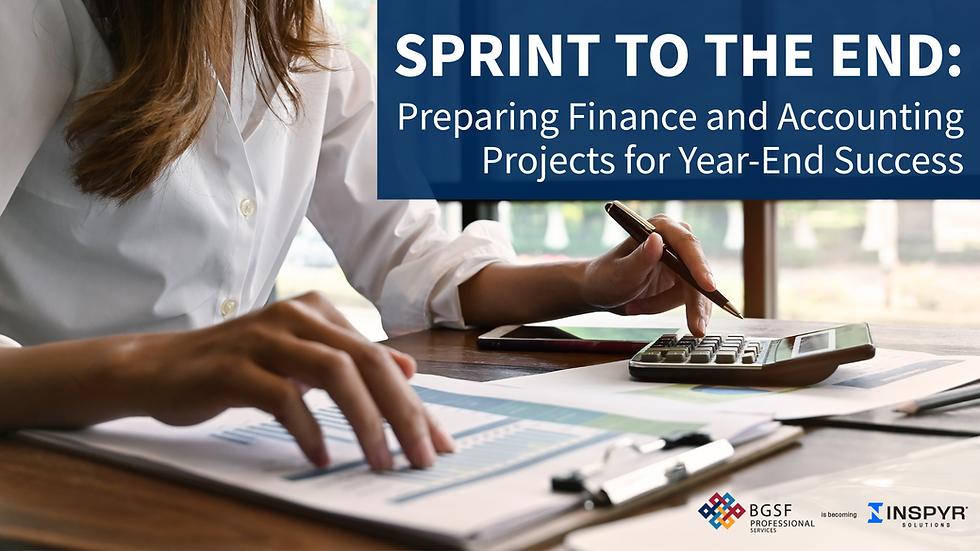Lessons from 2025: Using Financial Data to Improve 2026 Planning
- bberrodin
- Oct 15
- 2 min read

As 2025 comes to a close, organizations across industries are turning to one of their most valuable strategic tools: financial data. The lessons hidden in your 2025 numbers can shape a stronger, more agile 2026. From shifting consumer demand to rising operational costs and AI-driven automation, financial insights are the key to planning smarter, executing faster, and adapting with confidence.
2026 Financial Planning
1. Reflect on 2025 Performance: What the Data Reveals
Start by identifying trends in your 2025 financial statements. Look beyond profit and loss to uncover patterns in:
Revenue streams: Which products, services, or departments performed best—and why?
Expense categories: Where did costs rise unexpectedly? Are there recurring inefficiencies?
Cash flow timing: Did revenue cycles align with projections, or were there seasonal shortfalls?
Comparing these numbers across quarters can highlight operational gaps and help teams make data-backed adjustments before the new year begins.
2. Turn Variances into Insights
Budget variances are clues for your business. A deeper variance analysis can uncover underlying issues such as supply chain disruptions, labor shortages, or outdated technology.
For example, if overtime expenses spiked in Q3, that may point to gaps in workforce planning. If marketing spend exceeded ROI expectations, it’s time to reallocate those dollars strategically for 2026.
3. Use Predictive Analytics for Smarter Forecasting
Modern finance teams are moving from hindsight to foresight through predictive analytics. By integrating historical data with AI and machine learning tools, organizations can forecast revenue, model potential risks, and simulate “what-if” scenarios.
This allows leaders to plan with precision, testing how inflation, interest rates, or staffing changes might impact profitability before they occur.
4. Prioritize Agility Over Perfection
2025 reminded us that agility often beats precision. The most successful organizations were those that could pivot quickly, adapting budgets, staffing, and project priorities in real time.
In 2026, build flexible financial models that can adjust to changing market conditions. Shorter forecasting cycles, rolling budgets, and scenario planning can all help your organization stay responsive.
5. Invest in the Right Talent and Technology
Financial insights are only as good as the people and systems interpreting them. Many teams are supplementing internal talent with external consulting and staffing support to analyze data, streamline processes, and implement new technology.
Partnering with specialized finance and accounting professionals ensures your organization not only gathers data but also uses it efficiently to make confident, future-focused decisions.
Turning 2025 Lessons into 2026 Success
The numbers from 2025 tell a story. Will you read it closely enough to write a better one in 2026? By blending data-driven insights with adaptable strategies, your organization can move beyond traditional forecasting and into continuous financial improvement, year after year.
At BGSF, our experienced finance and accounting consultants help organizations interpret their data, strengthen forecasting models, and build smarter budgets for the future. Whether you need project-based analysis or external staffing support, our experts are ready to help you make 2026 your strongest year yet. Contact us today.



Comments